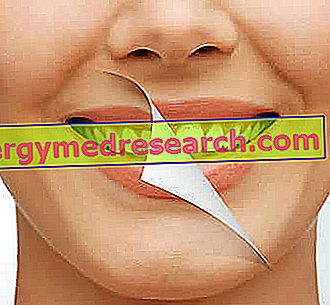Scoliosis in History

Scoliosis is a deformity of the spine known and studied since ancient times.
Already in 300 BC Hippocrates, after having classified the various angular deformities of the vertebral column, devised a series of tools to reduce these anomalies. Among these means the so-called traction bed stands out, represented in the figure, whose operating principle is still used today.
The name scoliosis derives from the Greek term skolíosis 'incurvamento', which in turn derives from skolíos 'curved'.
What is Scoliosis
Scoliosis appears as a lateral, permanent deviation of the vertebral column associated with the rotation of the vertebral bodies. This rotation is accompanied by a deformation of the intervertebral discs and by ligamentous muscle retractions (shortening).
PATOGENESIS OF SCOLIOSIS
One or more curves are formed which alter the appearance and function of the column and trunk (structured or primitive curves)
Equilibrium systems (CNS) lead to the formation of compensation curves so that the skull is centered on the pelvis and on the supporting perimeter.

If there is no rotation of the vertebral bodies we cannot speak of scoliosis and the anomaly is called paramorphism. This condition tends to spontaneous resolution during growth and does not require special treatments except adequate physical therapies and sports. The term paramorphism or scoliotic attitude can therefore simply indicate an incorrect postural attitude.
Classification
Based on its location, scoliosis is defined:
- lumbar scoliosis
- dorso-lumbar scoliosis
- dorsal scoliosis
- cervico-dorsal scoliosis
Scoliosis with a primary curve (70%):
a) Dorsal or thoracic scoliosis (about 25%)
b) Dorso-lumbar scoliosis (about 19%):
c) Lumbar scoliosis (about 25%)
d) Cervico-dorsal scoliosis (approximately 1%)
Scoliosis with double primary curve (30%):
a) Dorsal and lumbar scoliosis (about 23%)
b) Scoliosis with double thoracic curve
c) Thoracic and thoraco-lumbar scoliosis.
Scoliosis is idiopathic in 70-80% of cases, where it occurs without an apparent cause; the remaining 20-30% is represented by congenital or acquired scoliosis (for example following trauma, infections, tumors or arthritis).
The imbalance between skeletal and muscular development is the main cause of these deformities. For this reason, idiopathic scoliosis appears mainly in childhood and puberty, periods in which bone growth is high.
Scoliosis mainly affects females compared to males (with a 7: 1 ratio). In particular, females are more likely to develop severe scoliosis (8: 1) while for milder forms the risk is lower (1.2: 1).
The chances of a child of a scoliotic mother to develop scoliosis are 10 times greater than an individual son of a normal mother.
Diagnosis
A well-conducted medical history can provide important data for the classification of the patient.
The physical examination of the spine must be carried out in an upright position (standing position), evaluating the presence of one of the following signs:

- shoulders at different heights
- unbalanced pelvis and one or both prominent shoulder blades
- raised hip
- posture inclination on one side
- asymmetry of the size triangles
For example, by placing a plumb line at the level of the aisi of the seventh cervical vertebra it is possible to evaluate the degree of compensation between trunk and pelvis. Normally the plumb line should fall into the intergluteal fold.
The search for the hump is very important: by making the patient bend forward with the trunk, it is easy to evaluate the curvature of the spinous processes and above all the entity of the costal hump.
Epidemiology

The incidence of scoliosis in the population is shown in the graph. Note the prevalence of mild scoliosis (7.7%) compared to severe scoliosis (0.2-0.3%.
The measurement of scoliotic deviation is expressed in degrees (Cobb angle). This angle is obtained by tracing two lines tangent to the limiting ones of the first and last vertebra affected by scoliosis; the two perpendicular to these lines intersect forming an angle that indicates the extent in degrees of the scoliotic deviation.

7-8% of adolescents present a scoliosis between 5 and 11 ° Cobb
2-3% of adolescents present a scoliosis between 11 and 20 ° Cobb
0.3% -0.5% of adolescents show a Cobb scoliosis between 20 and 30 ° (1.2% of females and 0.1% of males).
Only 0.2-0.3% of adolescents present a deviation greater than 30 ° of Cobb.
NB: as we shall see later, a curve requires treatment only if it is greater than 30-40 ° Cobb, so the incidence of scoliosis requiring treatment is 0.2-0.3%.
Prognosis

SKELETAL MATURATION : The Risser test allows to establish the degree of bone development by evaluating the ossification of the iliac crests. The result can vary from Risser 0 (there is no nucleus of ossification) to Risser 5 (complete ossification that usually occurs 2-3 years after puberty).
Up to Risser 2 the risk of deterioration is 50%, after Risser 2 The risk is reduced to 20%.
The degrees are divided as follows: 1+ when ossification is around 25%; 2+ when it is around 50%; 3+ around 75%; 4+ for complete ossification of the tract and 5+ for complete fusion with the ileum.
LOCATION AND RISK OF DETERIORATION
 | THORACICS: thoracic scoliosis is most likely to deteriorate TOROMO LOMBARI LUMBARIAN lumbar scoliosis is less likely to deteriorate |
DEGREES, AGE AND RISK OF DETERIORATION
| Age (years) Curve (degrees) | 10-12 | 13-15 | 16 |
| <20 ° | 25% | 10% | 0% |
| 20 ° -30 ° | 60% | 40% | 10% |
| 30 ° -60 ° | 90% | 70% | 30% |
| > 60 ° | 100% | 90% | 70% |
Therapeutic indications
- Curve up to 15-20 °: No therapy, general motor activity to strengthen paravertebral muscles
- Curve over 20 ° up to 30-35 °: orthopedic bust
- Curve over 35-40 °: surgical treatment

Depending on the location, given the risk of deterioration, we will intervene first in a thoracic curve and a lumbar curve.
The observation includes clinical checks every 6 months and annual radiographic checks.
Prevention takes place through postural education and the regular practice of physical activity.
INCREASED TREATMENT: for angles between 25 and 40 degrees.
The nonoperative treatment aims to stop or slow down the curve's evolution.
There are several bloodless therapeutic solutions adaptable to the gravity of the situation; from kinesitherapy to selective electrostimulation of paravertebral musculature.
For the most serious situations, corsets of various types are used (Milwaukee, pinstripes, Lionese, Lapadula, etc.), which however have the disadvantage of limiting movement and being very uncomfortable for the patient.
SURGICAL TREATMENT has the purpose of blocking the deformity preventing its evolution thus avoiding respiratory or neurological complications.
However after the surgical treatment there is the loss of the movement and for this reason this practice is used only in the most serious cases (deviations greater than 35-40 °).
In general the surgical treatment is carried out at completed vertebral growth (15-17 years) to prevent the arthrodesis from interfering with bone growth. The use of a pinstriped corset can be a valid therapy in cases where bone growth has yet to end. The pinstripe corset is also used following surgical treatment to temporarily immobilize the spine.
Physical Activity and Scoliosis
PURPOSE: to prevent and correct the attitudes and pathologies of the osteo-articular and locomotor apparatus. An incorrect posture creates an imbalance of tone and adaptation between the muscle groups in the subjects with consequent misalignment of the articular segments, thus modifying the biomechanical relationships between them
Build a neuro-muscular corset to offer greater control and better stability of the spine
Create reflex automatisms to be integrated into global movements (gymnastics, games, sports)
Physical activity is particularly indicated in cases of mild or moderate scoliosis.
When it comes to scoliosis it is wrong to consider swimming as a primary means of prevention and treatment. In light of current knowledge, loading sports in fact have far greater beneficial effects than swimming. In particular situations (asymmetric movements or those requiring a back arch) this sport can even be counterproductive.
Avoid the "mobilizing" agonistic activities of the spine, because they make the column more flexible, therefore more easily deformable
- Artistic gymnastics
- Rhythmic gymnastics
- Classic dance
- I swim
In order to combat scoliosis, it is therefore necessary to choose load sports that do not involve excessive mobilization of the spine. Even more suitable is the practice of so-called "gymnastics" under the supervision of an expert (see: Sports and scoliosis)



